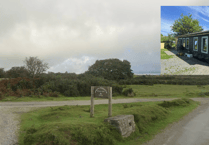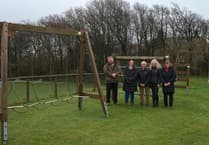EACH week, hundreds of planning applications come before Cornwall Council’s planning department, seeking to win approval for various plans right across the Duchy, with some concerning Holsworthy handled by Torridge District Council.
These plans can comprise of a number of different reasonings – ranging from permission to replace windows or listed building consent ranging up to large house building developments or changing of use of a building, for instance, from an office to a café, or flats.
Within this large and often complex system, there are a number of formats from which planning advice and approval can be sought.
These range from full applications where all the details which comprise a proposed development or work to a building are submitted, to outline applications, where further details are yet to be confirmed, for example, an outline application with reserved matters for appearance may not confirm the final proposed development but rather seek permission in principle.
An example of this is one for an outline permission for 20 dwellings on land with reserved matters for appearance and scale; the reserved matters would require further permission later for their inclusion.
Other types of applications include pre-application advice requests, where would-be developers submit often outline proposals to a local authority to ascertain whether it is likely to gain support or not prior to submitting a planning application.
The vast majority of applications are decided by planning officers employed by a local authority under ‘delegated powers’, meaning they do so on behalf of their employer, however, some applications are ‘called in’ by local councillors to be discussed at an area’s strategic planning committee meeting, meaning the final decision rests with a committee of councillors.
Council refuse hedgerow removal
PERMISSION for the removal of a hedgerow at an address near Callington has been refused by Cornwall Council.
It concerned Mount Pleasant House in Harrowbarrow.
The applicant told Cornwall Council’s planning department the reasons they wished for the removal of the length of hedgerow, stating: “I wish to improve access to our agricultural/garden land and involves a Cornish hedge located on our property, which also forms part of the boundary with an unadopted lane.
“We are considering removing a small section of the wall (approx 4.5m) in order to widen the existing entrance to our paddock and install a larger gate. The current gate, coupled with the large tree make access difficult for larger farm vehicles, and the change would greatly improve safe and practical access to our land. The gate lies on the boundary line of a neighbouring private lane. (Mount Pleasant Cottage) and our neighbours,
“Mr & Mrs Brown frequently object to us crossing their boundary to access our land and this feels like a sensible but costly solution that will meet all parties satisfaction. The current configuration complicates access and vehicle manoeuvrability and, by widening the access it would in some way remove the regularity to crossing their land, even though our deeds permit this access.
“The section of the Cornish hedge in question sits entirely within our paddock boundary but also abuts an unadopted lane. We regularly maintain the growth of hedges and plants in this lane to ensure it remains accessible to pedestrians.
“Removing a small portion of this wall and a tree (which the tree surgeon has advised has “die back”), would not only improve access for ourselves but, we would hope would also provide a turning area for daily traffic like the postal and delivery vans and, the occasional traffic that enters the lane unaware it leads to a dead end, especially now that Mr Brown has stated he is installing a gate at his boundary which will make for difficult and sometimes impossible reversing.
“On two occasions we have had to get a tractor to assist vans/lorries that have become stuck. Given these circumstances, I am seeking advice on whether this proposed alteration requires formal planning permission, or if it may be carried out under permitted development. I would be grateful for guidance on how to proceed in line with any relevant planning or conservation regulations.”
However, the application was opposed by neighbours, with eight writing in opposition and one in favour in addition to an objection from Calstock Parish Council, who said: “The Parish Council objects to this application: the removal of over 4 metres of hedgerow will contravene the Neighbourhood Development Plan's Environmental and Biodiversity Policy (EBD1 and EBD2) and the negative impact this will have on biodiversity and wildlife habitats.
“The hedgerow is indicative to the local heritage and should also be protected under policy HE3 in the NDP. There is also a lack of understanding as to the intention of the removal in order to improve vehicular access ' the lane itself would not lend itself to large agricultural vehicles and would be detrimental to the surface of the track.”
The application site also inspected by the council’s tree officer who observed: “The hedge contains 9 wooded species (Ash, Hawthorn, Crab apple, Birch, Holly, Beech, Oak and Blackthorn), is supported by a bank and has a parallel hedge, which would qualify it as an important hedge with regards to the The Hedgerows Regulations 1997.”
Refusing the application, Cornwall Council told the applicant: “The hedgerow in question is considered to be important as it has existed for over 30 years and meets criteria 5a and 7 of Part II of Schedule 1 of the Hedgerows Regulations 1997. The removal of any section of this hedgerow will have an adverse impact on the natural and historic landscape character of the area, which is not outweighed by any clear benefit.
“The removal of the hedgerow therefore fails to comply with policies 1, 2 and 23 of the Cornwall Local Plan Strategic Policies 2010 - 2030 (adopted November 2016), policy C1 of the Climate Emergency Development Plan Document 2023 and paragraphs 135 and 187 of the National Planning Policy Framework 2024.”
Replacement railings approved
THE replacement of a chain fencing outside of a dental surgery in Launceston has been approved by Cornwall Council.
Portman Dental & Implant Clinic submitted a listed building application for the replacement of the existing chain railing with horizontal bars, retention of the existing stanchions in a bid to improve public safety at 11 Castle Street, Launceston.
The Historic Environment Planning (HEP) team assessed the application prior to the final decision by Cornwall Council and their initial comments raised concerns over the wholesale removal of the existing railings and chains and replacement with new.
They said that whilst safety is a consideration, it was not felt the removal of the original features were necessary or justified.
It comes amid concerns for the future of the cast-iron stanchions which were believed to originate from 1884, when the building was originally constructed while the chains were believed to originate from after 1955.
After the proposal was amended, the HEP team were re-consulted, and the revised proposal was considered and considered acceptable and Cornwall Council granted consent to the amended plans.
• Keep up to date with the latest planning applications and other statutory notices (such as alcohol licensing and probates) that affect where you live by visiting our online Public Notice Portal – be the first to know by visiting www.publicnoticeportal.uk/cornish-and-devon-post-series





Comments
This article has no comments yet. Be the first to leave a comment.